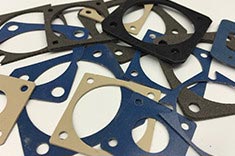EMI Shielding Products
- Custom Gasket Fabrication
- Connector Gaskets
- Bonded O Ring
- Custom Gaskets
- Conduct-O-Knit Knitted Wire Mesh
- Conduct-O-Seal Combo Gasket
- Conduct-O-Elastomer
- Conduct-O-Seal Oriented Wire in Silicone Gasket Material
- Conduct-O-Mesh Tape
- Conduct-O-Foam
- Conduct-O-Bond
- Optical Filters For Electronic Displays
- Shielded Vent Panels
- ESC Board Level Shielding
- 300 Series
How do I Test EMI RFI Shielding
What are you doing to protect your electronic devices from harmful EMI and RFI radiation? Electronic gadgets are known to radiate energy (electromagnetic and radio frequencies). When these emitted energies interact with other surrounding electronic devices, it causes performance flaws and malfunctions. As more and more electronic devices enter our daily lives, problems with electromagnetic interference and radio frequency interference have become an inevitable concern that all engineers and manufacturers must factor in designing and building devices. EMI RFI shielding is added to devices to meet the FCC's strict demands and other international regulation boards.

Ensuring the safety of your electronic devices is an essential part of the design. To meet these standards, four common EMI shielding tests are used. These tests include:
The Coaxial Transmission Line Test - this test is meant for planar materials. To begin the test, first place a reference testing device near the electronic gear. EMI RFI shielding effectiveness is measure by reading and comparing the output of the load and reference device.
The Open-Field Test - this test works for finished products. It is conducted in open sites that are free from metallic equipment. A series of antennae are placed at varying distances to measure conductive emissions and radiated field strength.
Shielded Box Test - Only use this testing method for frequencies below 500 megahertz. This test requires a sealed box with an opening so that the shielding unit is inserted through the opening.
Shielded Room Test - this test requires two separate shielded rooms. Testing equipment is placed in one room, and sensors are placed in the other. Then, shielding leads are used to get the most accurate external signals. This is the best test to use for determining a device’s susceptibility.
EMI RFI Shielding
- Three Common Options for EMI RFI Shielding MaterialsYou have many options to consider when determining EMI RFI shielding material. No two materials offer the same benefits, so you must choose materials based on your application's exact specifications.
- How do I Protect Electronic Devices from EMI and Corrosion
- Do My Electronics Require EMI RFI Shielding



